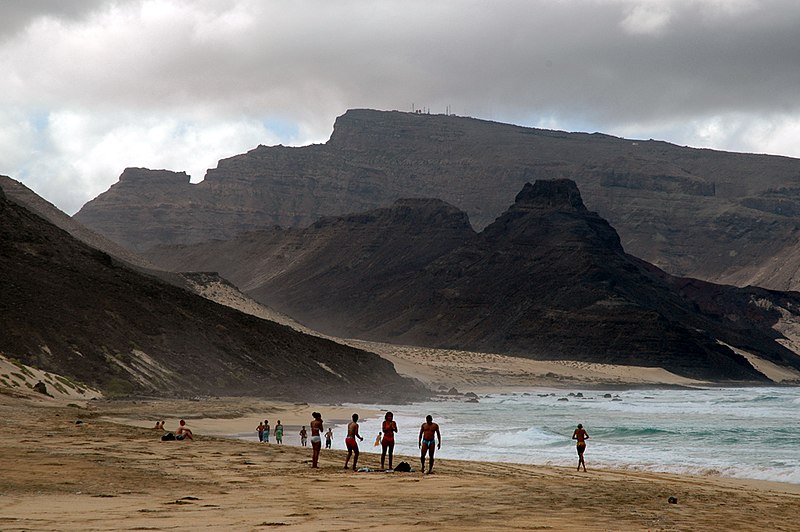Difference between revisions of "About Cabo Verde"
(Created page with "{{#eimage:http://upload.wikimedia.org/wikipedia/commons/thumb/7/7d/Calhau.jpg/800px-Calhau.jpg|410x579px|thumb|'''Calhou Beach.'''<BR/>Source: Wikipedia.org.}} The uninhabite...") |
m |
||
| Line 3: | Line 3: | ||
The uninhabited islands were discovered and colonized by the Portuguese in the 15th century; [[Cabo Verde]] subsequently became a trading center for African [[slaves]] and later an important coaling and resupply stop for whaling and transatlantic shipping. Following independence in 1975, and a tentative interest in unification with [[Guinea-Bissau]], a one-party [[system]] was established and maintained until multi-party elections were held in 1990. [[Cabo Verde]] continues to exhibit one of Africa's most stable democratic governments. Repeated droughts during the second half of the 20th century caused significant hardship and prompted heavy emigration. As a result, [[Cabo Verde]]'s expatriate population is greater than its [[domestic]] one. Most Cabo Verdeans have both African and Portuguese antecedents. | The uninhabited islands were discovered and colonized by the Portuguese in the 15th century; [[Cabo Verde]] subsequently became a trading center for African [[slaves]] and later an important coaling and resupply stop for whaling and transatlantic shipping. Following independence in 1975, and a tentative interest in unification with [[Guinea-Bissau]], a one-party [[system]] was established and maintained until multi-party elections were held in 1990. [[Cabo Verde]] continues to exhibit one of Africa's most stable democratic governments. Repeated droughts during the second half of the 20th century caused significant hardship and prompted heavy emigration. As a result, [[Cabo Verde]]'s expatriate population is greater than its [[domestic]] one. Most Cabo Verdeans have both African and Portuguese antecedents. | ||
| − | Source: | + | Source: www.cia.gov/library/publications/the-world-factbook/geos/cv.html |
Back to [[Adopting from Cabo Verde]] | Back to [[Adopting from Cabo Verde]] | ||
Latest revision as of 05:20, 24 March 2018
The uninhabited islands were discovered and colonized by the Portuguese in the 15th century; Cabo Verde subsequently became a trading center for African slaves and later an important coaling and resupply stop for whaling and transatlantic shipping. Following independence in 1975, and a tentative interest in unification with Guinea-Bissau, a one-party system was established and maintained until multi-party elections were held in 1990. Cabo Verde continues to exhibit one of Africa's most stable democratic governments. Repeated droughts during the second half of the 20th century caused significant hardship and prompted heavy emigration. As a result, Cabo Verde's expatriate population is greater than its domestic one. Most Cabo Verdeans have both African and Portuguese antecedents.
Source: www.cia.gov/library/publications/the-world-factbook/geos/cv.html
Back to Adopting from Cabo Verde
